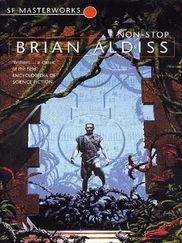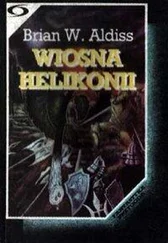Throughout the summer and the long lazy autumn, the Wheel was hauled as often by malefactors as by priests. Only when life became more difficult, when snows began to fall and crops to fail, did the old faith grow strong again. Then the religious returned, begging for a guaranteed place among the righteous. The criminals were sent off to become sailors or soldiers, or were dumped unceremoniously in Persecu- tion Bay.
Father father what headwaters are these
The rock so red hot like a forehead
And me so fevered in the rude red darkness
Are you there above below me
Waiting not to die O death
Its energies You scream in the walls
Of my existence by my side The lights go by
Go by and are gone and I in the snoring
Rock I revile myself That thing
I never did in mind but of a sudden
With your knife cutting our mutual
It was I swear our mutual artery
This place of terror screaming
Where I’ll forever bleed like lava
Clogging the rude red rock darkness
His thoughts ran in curious patterns, seemed to him to flow through him forever. Time was marked in the entombed soul by protracted squeals of rock against rock and by hideous groans. Gradually, the groans caught his attention. His mind became quieter listening to them. He was uncertain of his whereabouts. He imagined himself lying in the subterranean stall of some great wounded beast. Though close to death, the beast was still searching for him, looking here, looking there. When it found him, it would fall upon him and crush him to death in its own final agonies.
At last he roused himself. It was the wind he heard. The wind blew down the orifices of the Wheel, creating a harmony of groans. The squealing was the movement of the Wheel.
Luterin sat up. The priests of the Wheel had not only let him in, thus saving him from his father’s avengers, they had absolved him from all his sins before guiding him into his cell. Such was their standard practice. Men who were imprisoned with their sins upon them were more likely to go mad.
He stood up. The terrible thing he had done filled all his mind. He looked with horror at his right hand, and at the bloodstain on his right sleeve.
Food arrived. It could be heard rumbling down a chute in the rock overhead. It consisted of a round loaf of bread, a cheese, and a chunk of something which was probably roast stungebag, tied up in a cloth. So it was Batalix-dawn overhead. Soon the small winter would prevail, and then Batalix would not be seen again for several tenners. But little difference that made in the entrails of Mount Kharnabhar. As he munched on a piece of bread, he walked about his cell, examining it with the attention a man gives his surroundings when he knows that a narrow box is to become his life.
The Architects of Kharnabhar had arranged every measurement to correspond in some way with the astronomical facts which governed life on Helliconia. The height of the cell was 240 centimetres, cor- responding to the six weeks of a tenner times the forty minutes of the hour, or to five times the six weeks times the eight days in a week.
The width of the cell at its outer end was 2.5 metres—250 centimetres, corresponding to the ten tenners of a small year times the number of hours in a day.
The depth of the cell was 480 centimetres, corresponding to the number of days in a small year.
Against one wall was a bunk, the cell’s sole furniture. Above the bunk was the chute down which provisions came. On the far side of the cell was the opening which served as a latrine. The wastes fell down a pipe to biogas chambers below the Wheel, which, supplemented by vegetable and animal wastes from the monastery overhead, supplied the Wheel with its methane lighting.
Luterin’s cell was separated from those on either side by walls .64159 metres in thickness—a figure which, added to the cell width, gave the value of pi. As he sat on his bunk with his back against this partition, he regarded the wall on his left. It was solid unmoving rock, and formed the fourth wall of the cell with scarcely a crack between it and its neighbours in the Wheel. Carved in this rock were two sets of alcoves: a high series containing the biogas burners, which provided the cells with what light and warmth they enjoyed, and, set twice as frequent, a lower series containing lengths of chain, firmly stapled into place.
Still munching his bread, Luterin crossed to the outer wall and lifted the heavy links of chain. They seemed to sweat in his hands. He dropped them. The chain fell back into its narrow alcove. It consisted of ten links, each link representing a small year.
He stood there without movement, his gaze locked on the length of chain. Beside the horror of his deed, another horror was growing, the horror of imprisonment. By these ten-link chains, the Great Wheel was to be moved through space.
He had not yet taken his turn with the chains. He had no notion how long he had lain in a delirium, while words winged like birds through his head. He recalled only the shrill noise of trumpets from the monks somewhere above the Wheel, and then the lurching horizontal movements of the Wheel itself, which continued for half a day.
Contemplating the outer wall frightened Luterin. The time would come when he would feel differently. That wall was the only changing element of his environment. Its markings formed a map of the journey; by those excoriations, a practised prisoner could chart his way through time and granite.
The inner walls, the permanent walls of the cell, had been elaborately-incised by previous occupants. Portraits of saints and drawings of genital organs testified to the mixed occupancy of the cell. Poems were engraved here, calendars, confessions, calculations, diagrams. Not an inch had been spared. The walls preserved fossils of spirits long dead. They were palimpsests of suffering and hope.
Revolutionary slogans could be read. One was cut on top of an earnest prayer to a god called Akha. Many of the earliest markings were obliterated by later ones, as one generation obliterates another. Some of the early inscriptions, though faint, were legible and delicately formed. Some were in ornate scripts which had disappeared from the world.
In one of the faintest, most elaborate scripts, Luterin read the basic details of the Wheel itself. These were figures which had a power over all who were incarcerated here.
The Wheel might more properly be described as a ring, revolving about a great central finger of granite.
The height of the Wheel was a uniform 6.6 metres, or twelve times 55, the northern latitude of the Wheel itself. Counting its base, its thickness was 13.19 metres, 1319 being the year of Freyr-set, or Myrkwyr, at latitude 55°N, dating the years from the nadir year of apastron. The diameter of the Wheel was 1825 metres, the number of small years in one Great Year. And 1825 was the number of cells set in the outer circumference of the Wheel.
Close to this numeration, and allowed to remain intact, was an intricately engraved figure. It represented the Wheel in its correct dimensions, set in the rock. Above it was the cavern, large enough to permit the monks from the monastery to walk on top of the Wheel and drop supplies to the prisoners below. Entry to the cavern could be gained only through Bambekk Monastery, which perched on the hillsides of Mount Kharnabhar, above the buried Wheel.
Whoever had incised the figure on the granite had evidently been well informed. The river that ran below the Wheel, assisting its revolutions, was also depicted. Other schematic lines carried a connection from the heart of the Wheel out to Freyr and Batalix and to the constellations of the ten houses of the zodiac—the Bat, Wutra’s Ox, the Boulder, the Night Wound, the Golden Ship, and the others.
“Abro Hakmo Astab!” Luterin exclaimed, uttering the forbidden oath for the first time. He hated these supposed connections. They lied. There were no connections. There was only himself, embedded in rock, no better than a gossie. He flung himself down on the bunk.
Читать дальше








